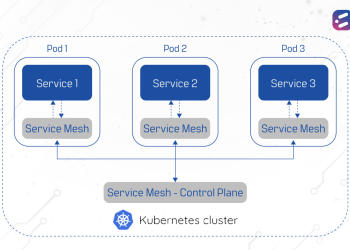It is a misconception that microservices are only used for the back-end development of apps. The fact is that microservices are the way forward for front-end development as well, because, like with the back-end, they fragment front-end monoliths into smaller, more manageable components. This increases the efficiency of the development process, makes the UI more maintainable, and makes the deployment of individual features independent.
Web developer Cam Jackson defines micro front-ends as “An architectural style where independently deliverable frontend applications are composed into a greater whole”.
Micro front-ends are becoming an increasingly widely adopted trend for building web-based applications, and are already in use by leading enterprises including Ikea, Starbucks, and Spotify.
Why are companies modularizing their front-ends with microservices?
There are a number of reasons for this shift – here are a few important use cases for this approach.
1. To convert existing apps into a progressive or responsive web applications
Using micro front-ends can represent an easier way to modify the existing code as the approach democratizes development and deployment.
2. To manage multiple teams and complex front-end needs for large organizations
A monolithic front-end would mean slow forward progress, while micro front-ends reduce cross-team dependency, thereby speeding things up.
3. To scale development
With a modularized front-end, testing and deployment become more efficient without affecting the entire application development.
4. To use new or different languages
In legacy applications with monolithic architecture, integration with new languages may not be possible because they may have dependencies beyond what meets the eye. This needs comprehensive decoupling into microservices in order to adopt new languages. This is seamlessly achieved with micro front-ends.
In the words of software developer Martin Fowler, “Micro front-ends push you to be explicit and deliberate about how data and events flow between different parts of the application, which is something that we should have been doing anyway!”
Let’s get to the benefits of micro front-ends
1. Code maintenance is easier
As the codebase for each micro front-end is smaller, it’s almost as if developers are working on mini apps, where each team will be responsible for specific micro-apps right from database to user interface.
Additionally, one component of the app can be deployed, and different teams can re-use it as well as the code for it. These individual codebases are easier to manage and mitigate the risk of complexities from accidental coupling.
2. Micro front-ends are tech agnostic
The architecture of micro front-ends is independent of technology. That means you can use any language of your preference – whether PHP, Python, or any JavaScript like Node, Angular, Vue, etc. – without worrying about deployment, upgrades, or updates.
3. They are easily scalable
Moving from a monolith architecture to microservices can help you upgrade incrementally with teams working independently. This makes the app more scalable because if there is a bug-fix or upgrade on one part of the front-end, it can be made on that part alone, without disrupting the functioning of the rest of the application.
Are there downsides?
Yes, there are a few.
1. Real-world testing
Complex testing of the application as a whole can get a little complicated and it may be harder to get a complete picture of the application. While each front-end mini app can be tested in isolation, getting a real-world user test is tougher.
2. Ensuring standard quality across micro front-ends
The deployment, assembly, and configuration process for each micro front-end will be different, so it can get challenging to keep all developers working to the same standards to ensure a high-quality user experience is delivered.
While these two downsides do represent genuine challenges, they also have clear solutions. For instance, defining and implementing the right testing use cases during the course of the user acceptance testing (UAT) sprints can help address testing concerns. And with a well-oiled Agile process followed through the development process, adherence to quality standards across the team can be ensured as well.
As with micro back-ends, the tremendous benefits that micro front-ends offer in terms of ability to scale, maintain and upgrade the front-end of an application far outweigh the increased complexity that they bring, especially for larger organizations.
Micro front-ends are not just a new buzzword. They are an important tool enabling large enterprises to provide enhanced customer experiences. If you are looking to maintain a competitive edge and propel your brand forward, give CloudNow a call today.













